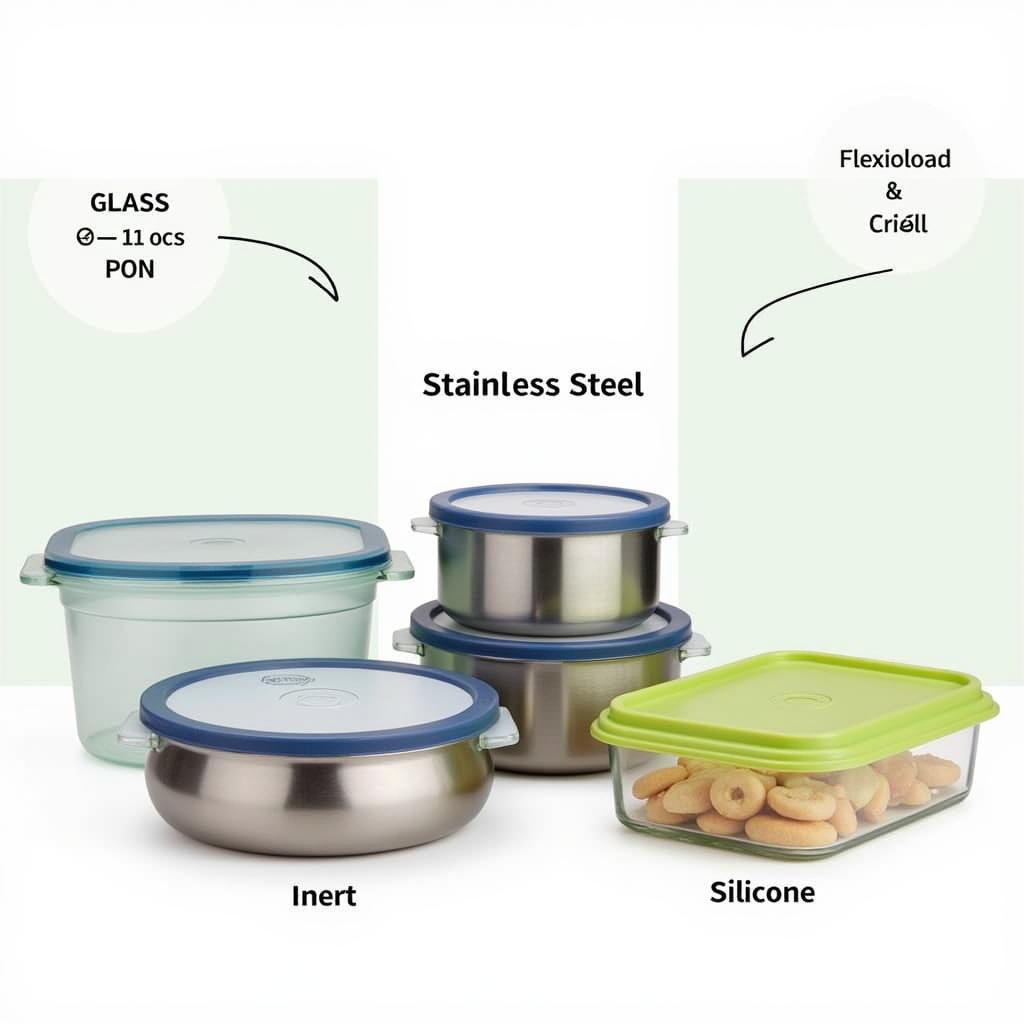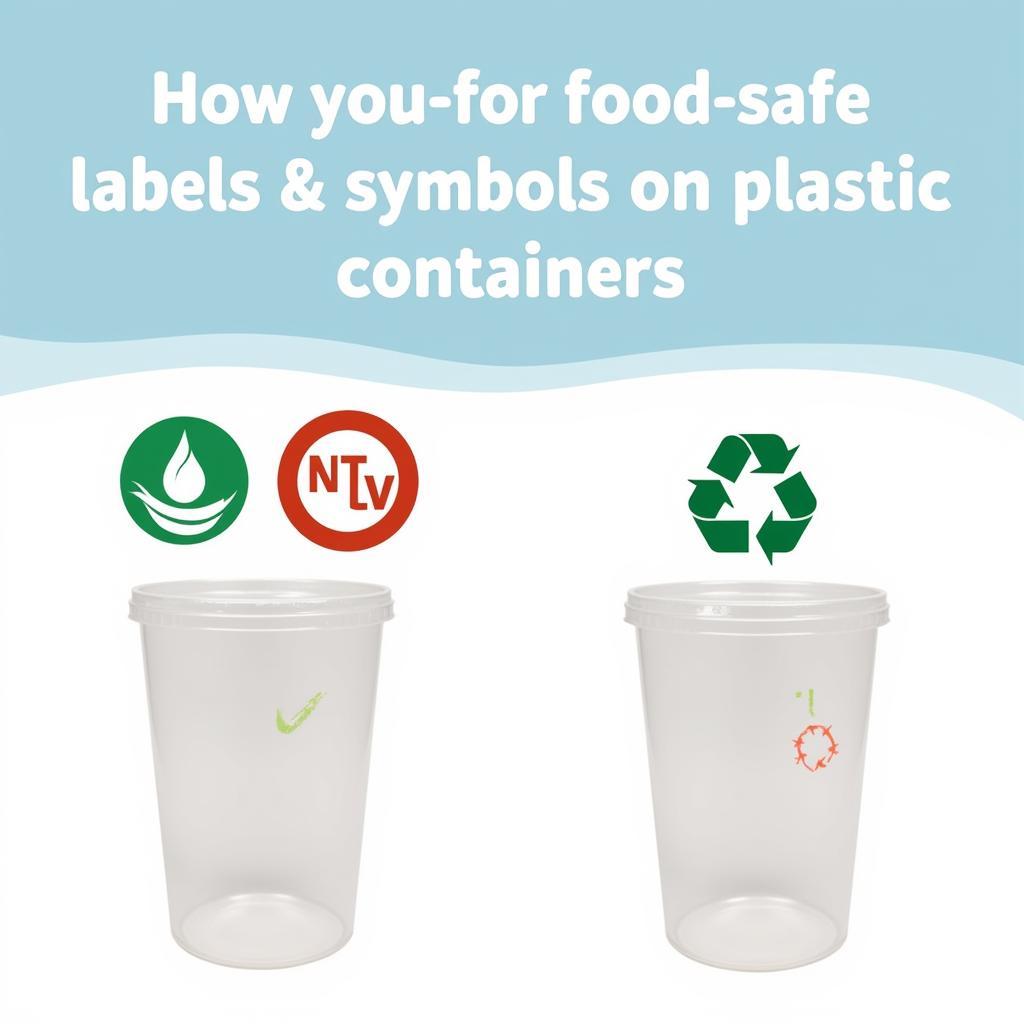Choosing the right Food Safe Plastic Containers can feel like navigating a maze. With so many options available, it’s important to understand what makes a container truly safe for storing your food. This guide will delve into the world of food safe plastic containers, exploring the different types of plastics, identifying potential hazards, and providing tips for safe usage and disposal. We’ll also look at some alternatives to plastic for food storage, so you can make the best choice for your kitchen and the environment.
Understanding Food Safe Plastics
Not all plastics are created equal, and some are definitely better suited for food storage than others. Food safe plastics are specifically designed to prevent harmful chemicals from leaching into your food. Look for containers labeled as “food safe,” “BPA-free,” or with a recycling code of 1, 2, 4, or 5. These numbers indicate that the plastic is less likely to leach chemicals. Avoid containers with recycling codes 3, 6, and 7, as these may contain chemicals like BPA or phthalates. You might even be surprised to learn about how different methods of food preservation work, like using a vacuum food storage canisters.
Identifying Safe and Unsafe Plastics
Common Food Safe Plastics
-
HDPE (High-Density Polyethylene): A durable and versatile plastic often used for milk jugs, juice bottles, and cereal box liners. It’s considered safe for food storage and is also recyclable. Have you ever wondered, “is hdpe food grade?”. The answer is yes!
-
LDPE (Low-Density Polyethylene): Flexible and transparent, LDPE is commonly used for squeeze bottles, bread bags, and some food wraps. It’s generally considered safe for food contact.
-
PP (Polypropylene): A strong and heat-resistant plastic used for reusable food containers, yogurt tubs, and microwaveable dishes. It’s safe for both hot and cold foods.
Plastics to Avoid
-
PVC (Polyvinyl Chloride): Often used for plumbing pipes and some food packaging, PVC can contain harmful chemicals. Avoid using it for food storage.
-
PS (Polystyrene): Commonly known as Styrofoam, PS is often used for disposable food containers and cups. While generally considered safe for short-term use, it can leach styrene at high temperatures, so avoid using it for hot foods or reheating. Consider alternatives like food containers foam made from more sustainable materials.
-
PC (Polycarbonate): While once popular for reusable water bottles, PC can leach BPA. Look for BPA-free alternatives.
Tips for Using Food Safe Plastic Containers Safely
Even with food safe plastic containers, it’s important to use them correctly. Avoid heating food directly in plastic containers unless they are specifically labeled as microwave-safe. Don’t reuse disposable containers, as they can degrade over time and leach chemicals. Wash containers thoroughly with soap and warm water after each use. And be mindful of storing acidic or oily foods in plastic, as they can sometimes absorb flavors or odors. Preserving food in food in glass jars offers a safe and sustainable option for various food types.
Exploring Alternatives to Plastic
Looking for eco-friendly alternatives? Glass, stainless steel, and silicone are all excellent options. Glass is inert and won’t leach chemicals, stainless steel is durable and easy to clean, and silicone is flexible and heat-resistant. For larger quantities or bulk storage needs, you might consider the practicality and convenience of a food barrel pack.
 Alternative Food Storage Containers
Alternative Food Storage Containers
What are the best food safe plastic containers for freezing?
Look for containers specifically labeled as “freezer safe.” HDPE and PP are good choices.
Can I microwave food in any plastic container?
No, only use containers specifically labeled as “microwave safe.”
How do I know if a plastic container is food safe?
Look for labels like “food safe” or “BPA-free,” or check the recycling code.
 Checking Plastic Container Safety
Checking Plastic Container Safety
What are the dangers of using non-food-safe plastics?
Harmful chemicals can leach into your food, potentially posing health risks.
How should I dispose of food safe plastic containers?
Recycle them according to your local guidelines.
In conclusion, choosing food safe plastic containers requires careful consideration. By understanding the different types of plastics, their potential hazards, and safe usage practices, you can ensure that your food is stored safely. Don’t forget to explore alternative materials like glass and stainless steel for a more sustainable approach to food storage. Food safe plastic containers are essential for maintaining the freshness and quality of your meals.
FAQ
- Are all plastics safe for food storage?
- What does “BPA-free” mean?
- Can I reuse disposable plastic containers?
- How should I clean food safe plastic containers?
- What are some eco-friendly alternatives to plastic food containers?
- Are there any regulations regarding food safe plastic containers?
- Where can I find more information on food safe plastics?
You might also be interested in learning more about other food storage methods.
When you need support, please contact us by phone at 02437655121, email at minacones@gmail.com or visit our address: 3PGH+8R9, ĐT70A, thôn Trung, Bắc Từ Liêm, Hà Nội, Việt Nam. We have a 24/7 customer service team.